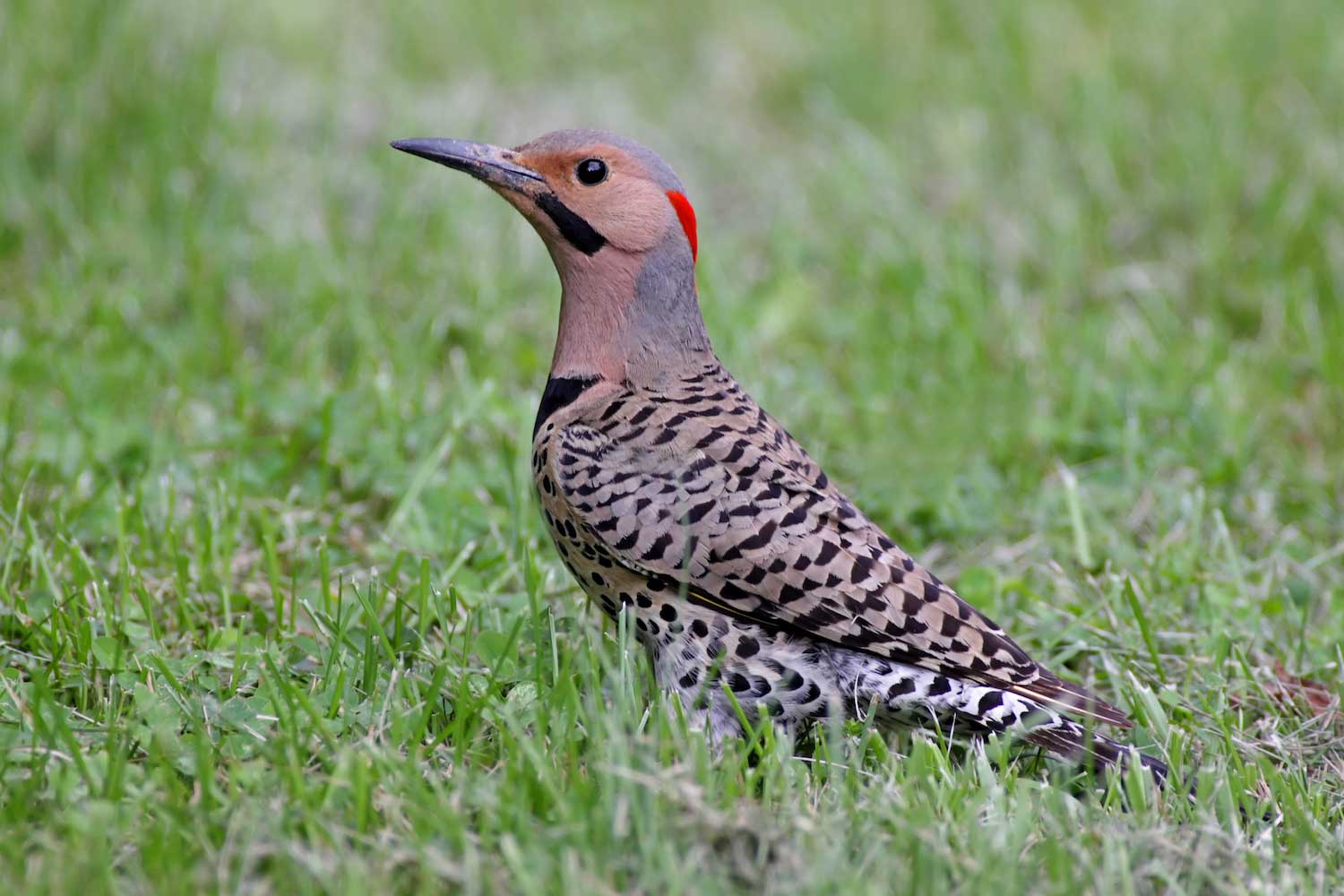Northern flickers buck some common woodpecker trends

Most of our local woodpecker species are some combination of black, white and red, but the northern flicker sets itself apart from the rest with its stylish appearance.
Northern flickers are mostly brown in color, but they show flashes of other hues both at rest and in flight. Their breasts are covered in black polka dots, and they have a stark black bib between their heads and their breasts. On their heads, they sport patches of rich gray.
There are some regional differences in their appearance, too, with yellow-shafted northern flickers living in the eastern United States about as far west as the Rocky Mountains and red-shafted flickers living in the western United States. In some areas, the two variations overlap. The yellow- and red-shafted flickers are similar in appearance save for some color variations on their flight and tail feathers and a whisker patch on their faces, according to the Cornell Lab of Ornithology.
The yellow-shafted flickers have yellow shafts on their flight and tail feathers, while those feathers are red in red-shafted flickers. Male yellow-shafted flickers also have a flash of red on the nape of their neck and a black whisker patch on their face, while male red-shafted flickers lack the red nape and can have either a black or red whisker patch depending on if they are in the east of west part of their range, Cornell Lab reports. Yellow-shafted females also do not have the black whisker patch.
Flickers are the most widespread woodpecker in North America, according to the American Bird Conservancy. They can be found across the entire contiguous United States as well as parts of Mexico and Canada, and their range also stretches south into Central America. They are forest birds like our other woodpeckers, but they also inhabit fields, forest edges and even city parks. And while they traditionally live in forests, they are seen on the ground more often than other woodpeckers because of their food preferences.
Like most woodpeckers, northern flickers mostly eat insects, and their foods of choice are ants and beetles. They also eat butterflies, moths, flies and snails, and when insects aren't available, they will turn their attention to berries and seeds.
On the ground, they are easily able to hunt for their preferred foods, the Cornell Lab reports. Because they often probe into the soil to find ants and other insects, their long bills have a slight curve at the end to help they dig in the dirt. They also have extra-long tongues that stretch 2 inches past the tip of their bill, the American Bird Conservancy reports. Their large salivary glands produce a sticky saliva that helps trap insects on their tongues.
Northern flickers are cavity nesters, and they usually excavate their own holes in dead or dying trees, although they will also move into existing cavities. Most woodpeckers do not reuse the same nesting cavity from year to year, but flickers often do, the Cornell Lab reports.
Both male and female flickers help create nesting cavities, excavating a hole about 3 inches across and 13 inches to 16 inches deep. At the bottom, they will add a layer of wood chips for the eggs and, later, the chicks. The space inside the nest is only large enough for the eggs and one adult bird to incubate the nest. The eggs hatch between 11 and 13 days after being laid, and a few weeks after hatching the nestlings will cling to the walls of the nest rather than sit on the bed below.
Woodpeckers aren't noted for their songs and calls like many songbirds are, but northern flickers are noisy by woodpecker standards. They sound similar to pileated woodpeckers, albeit not as loud as their larger relatives. Their call is a rattling, repeated syllable that is repeated for seven or eight seconds at a time, according to the Cornell Lab. It often sounds like they are calling out "kyeer, kyeer, kyeer, kyeer, kyeer, kyeer, kyeer, kyeer." When two flickers are near each other, their call is quieter and sounds more like they are saying "wick-a, wick-a, wick-a, wick-a, wick-a, wick-a."
